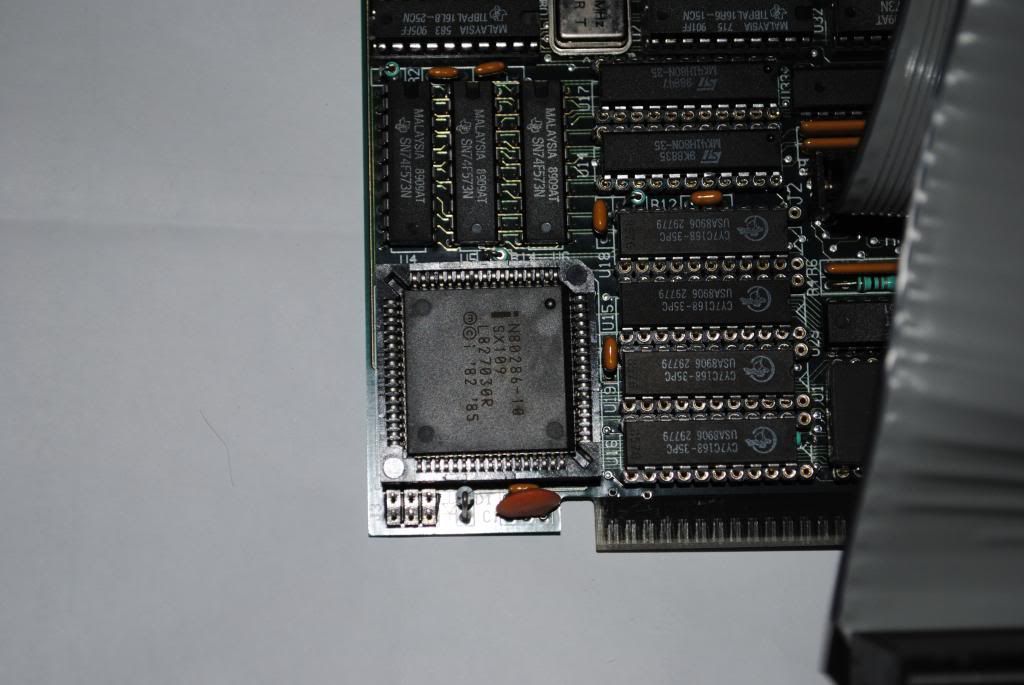Hi all (again!)
Most of you probably saw my earlier thread about the Laser Turbo XT POST problem... however now I have another one!
I also own a IBM XT (5160) which I decided to dust off (since the Turbo XT isn't going yet). As luck would have it this one wouldn't power up either......
I followed the excellent guide on minuszerodegrees.net about powering up / troubleshooting the 5160 and here is what I found:
- Cleaned the board with some Isopropyl alcohol.
- Checked PSU voltages - all OK
- Removed all ISA cards; set the video adaptor (Dip Switch) type to monochrome and powered it up.
- No beeps or any signs of life except the PSU running.
- Swapped ram from bank 0 to bank 1 (and vice versa). No signs of life.
- Put video card back in and tried again. No beeps or anything displayed.
- Tried another 8088 processor I had lying around - no go.
I also searched on these forums about repairs; but it seems that most people have short-circuit problems with capacitors. Since the PSU isn't cutting out it's not a short circuit problem. Even so I also visually inspected all the capacitors and couldn't see anything suspicious. The PC worked about 15 years ago; so I am guessing something has aged or corroded.
My guess is the motherboard is now a brick. Just thought I would see if anyone else had any ideas?
Also if anyone has a working motherboard (256k type) complete with RAM they would like to sell please PM me.
Just for interests sake the main reason I really want to get this one going is the history behind it. The last owner used it for simulation work in Chemistry (lots of mathematical computations). It's got a flying lead from the CPU socket to an expansion board with what appears to be a 80286 with a mathematical coprocessor (note I did actually remove this and test with a normal 8086 processor). It also has the biggest memory expansion card in it I have ever seen. If people are interested I can take some photos of the above.
Most of you probably saw my earlier thread about the Laser Turbo XT POST problem... however now I have another one!
I also own a IBM XT (5160) which I decided to dust off (since the Turbo XT isn't going yet). As luck would have it this one wouldn't power up either......
I followed the excellent guide on minuszerodegrees.net about powering up / troubleshooting the 5160 and here is what I found:
- Cleaned the board with some Isopropyl alcohol.
- Checked PSU voltages - all OK
- Removed all ISA cards; set the video adaptor (Dip Switch) type to monochrome and powered it up.
- No beeps or any signs of life except the PSU running.
- Swapped ram from bank 0 to bank 1 (and vice versa). No signs of life.
- Put video card back in and tried again. No beeps or anything displayed.
- Tried another 8088 processor I had lying around - no go.
I also searched on these forums about repairs; but it seems that most people have short-circuit problems with capacitors. Since the PSU isn't cutting out it's not a short circuit problem. Even so I also visually inspected all the capacitors and couldn't see anything suspicious. The PC worked about 15 years ago; so I am guessing something has aged or corroded.
My guess is the motherboard is now a brick. Just thought I would see if anyone else had any ideas?
Also if anyone has a working motherboard (256k type) complete with RAM they would like to sell please PM me.
Just for interests sake the main reason I really want to get this one going is the history behind it. The last owner used it for simulation work in Chemistry (lots of mathematical computations). It's got a flying lead from the CPU socket to an expansion board with what appears to be a 80286 with a mathematical coprocessor (note I did actually remove this and test with a normal 8086 processor). It also has the biggest memory expansion card in it I have ever seen. If people are interested I can take some photos of the above.
Last edited:


